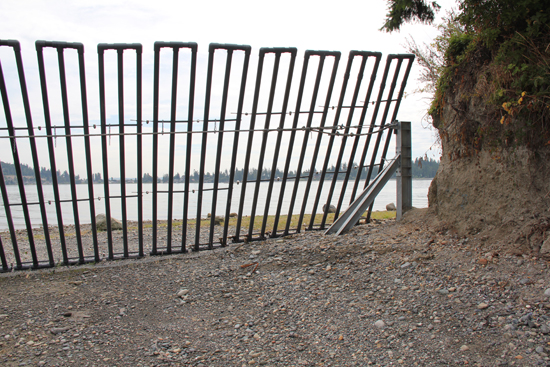“Being Frank”
By Lorraine Loomis, Chair, Northwest Indian Fisheries Commission
A population explosion of harbor seals and sea lions along the Washington coast and in Puget Sound is interfering with recovery of weak salmon and steelhead stocks, threatening tribal treaty rights and posing increasing threats to public safety throughout our region.
At the root of the problem is the Marine Mammal Protection Act (MMPA) of 1972, a well-intentioned law that was needed at the time, but today has led to unintended consequences.
Tribes historically lived in balance with marine mammals, salmon and all other elements of the environment. But commercial hunting and state-directed control measures had driven down many West Coast marine mammal populations by the time the MMPA became law.
Today their populations are healthy and growing steadily. Since the 1950s, California sea lions have increased from about 10,000 to more than 300,000. Harbor seal populations along the Washington and Oregon coasts have grown from about 3,000 to 40,000. West Coast Steller sea lions numbered about 18,000 in 1979; today there are about 80,000.
But while harbor seal and sea lion populations have steadily increased over the past four decades, the opposite is true for many salmon and steelhead stocks in western Washington, which continue to steadily decline.
No one is claiming that the increase in harbor seals and California sea lions is the main reason for the loss of salmon and steelhead. We know that the cause is ongoing loss and destruction of salmon habitat.
Still, the increasing loss of salmon and steelhead to seals and sea lions sends ripples through the whole marine ecosystem. Harbor seals and sea lions can eat from about 10 to more than 100 pounds of fish every day. While they eat other fish too, their impacts can be significant to the weakest salmon and steelhead stocks we are trying to protect and restore.
That means there are fewer salmon and steelhead available for others species that depend on the ocean ecosystem. Threatened orcas, for example, must compete for salmon – their preferred food – with steadily growing seal and sea lion populations and steadily shrinking salmon populations.
As the salmon decline, the fishing rights of the Salmon People – the treaty Indian tribes in western Washington – are increasingly threatened. Our treaty-reserved rights depend on salmon being available for harvest.
As seal and sea lion populations increase, so do their encounters with humans, especially fishermen. Experts at stealing fish from nets and fishing lines, they have been seen taking fish right out of boats tied up to the dock. In many marinas, sea lions lay claim to docks, causing thousands in damage and lost revenue and threatening anyone who gets too close.
With each encounter they become less afraid of people and more aggressive, putting fishermen and everyone else at increased risk. Control measures – such as rubber bullets and firecrackers – just don’t work because seals and sea lions quickly learn to avoid or ignore them.
Federal government action is long overdue to address the problems being caused by the overpopulation of harbor seals and sea lions in Washington marine waters. One encouraging recent development is the Endangered Salmon and Fisheries Predation Prevention Act introduced by U.S. Reps. Jamie Herrera Beutler of Washington and Kurt Schrader of Oregon. The act would streamline the current lengthy process for state and tribal natural resources managers on the Columbia River to remove problem animals if attempts to chase them off are unsuccessful. That is a good step in the right direction. We must reduce the added pressure that these marine mammals are putting on these already diminished resources. We must focus our management efforts on the resources that need the most protection.
Harbor seal and sea lion populations must be brought back into balance with the reality of today’s ecosystems, which cannot support their steadily increasing numbers. We need to focus our efforts on protecting and restoring habitat to successfully recover salmon populations so we can have both sustainable strong runs of wild salmon and healthy marine mammal populations.






